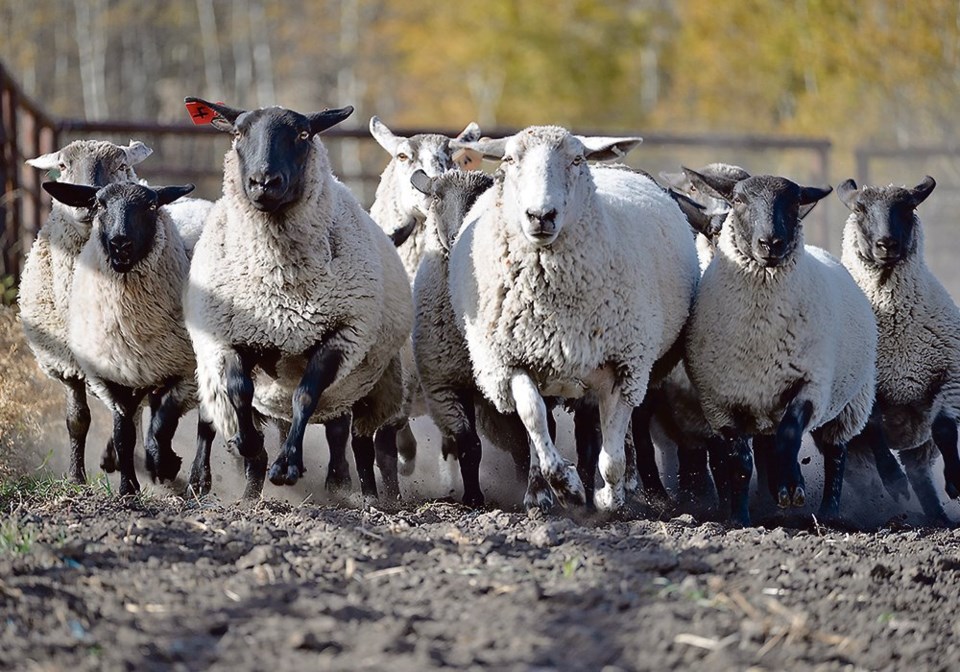It turns out it not only makes sense, but it can significantly boost productivity.
A combo approach to land use was the subject of new research by scientists at Oregon State University and colleagues with the Oregon State College of Agricultural Sciences in a study that compared lamb growth and pasture production in open fields with photovoltaic solar panels.
Past research has shown that grasslands and croplands in temperate regions are the best places to install solar panels for maximum energy production.
Demand for clean, renewable energy has grown substantially in recent years.
In the United States, solar photovoltaic installation has increased by an average 48 percent per year over the past decade and this is expected to double again over the next five years. This demand will require large areas of open land that could lead to competition with agricultural uses or, as this study suggests, a dual use of land for agricultural and energy industries.
According to the Canada Energy Regulator, the Prairies will lead the country’s renewable energy capacity over the next three years. While wind capacity in Saskatchewan is projected to triple and nearly double in Alberta between now and 2023, significant solar capacity growth is also projected with Alberta adding 1,200 megawatts by 2023. Some 98 percent of Canadian solar capacity is currently installed in Ontario. In 2018, solar in Ontario had a total capacity of 2,871 MW.
The idea of combining agriculture with energy production is not new. Agrivoltaic systems first emerged in 1982.
Alyssa Andrew, a master’s student at OSU and lead author of the paper published in Frontier in Sustainable Food Systems, said sheep have been used for years to control vegetation around solar panel units because it can be difficult to navigate with machinery.
“Farmers can rent out their sheep to maintain solar sites in exchange for animal feed and an additional fee. Most research about agrivoltaics investigate the impacts on crops but, at the time of our study, there was not anything on animal production, welfare and behaviour.”
The location for the OSU study was a six-acre solar site where the actual study pasture used 1.5 acres in total with three sets of 0.25 acres each for the solar panel areas and three sets of 0.25 acres each of open, non-shaded areas.
“We only used 2.5 to three-month-old weaned (Polypay) lambs of mixed sex in the study in both years,” said Andrew. “We continuously grazed the lambs from 17 April to 12 June 2019 and from 30 March to 11 June 2020.”
The research team had three to six lambs (at the stock rate of 30-60 lambs per hectare) in each grazing plot in open and solar pastures during the spring grazing seasons.
“We applied a put-and-take grazing management practice, using tester and regulator lambs to optimize the pasture production and animal (feed) intake depending on the changing pasture growth,” she said.
The put-and-take system was applied to match feed demand with changing supply and the groups of lambs were randomly assigned to any one of the six pastures.
“We did not conduct a full-scale bio-economic analysis,” said Andrew. “The photovoltaics site in our study was originally designed and established to maximize the solar energy production without taking into account any agricultural practice underneath.
Traditionally, the understory forage in the photovoltaics site was mown by sheep as a tool to maintain the forage growth. Our study showed that grazing under solar panels could present a great opportunity for lamb production from a very animal welfare friendly environment.”
The study showed that they found less overall forage (38 percent) but higher quality forage in the solar pastures. The lambs raised in each pasture type gained similar amounts of weight and their grazing habits around the panels cut down mowing costs while the panels themselves provided shade.
Daily water consumption of the lambs in the two pasture types in spring 2019 was similar but lambs grazing in open pastures consumed more water than those grazing under solar panels in the late spring period. There was no difference observed in water intake by the lambs in spring 2020.
Of significance was that sheep grazing removed the need for the use of herbicides and related labour costs. With the solar panels providing added economic value in energy production, the overall productivity of the land was maximized.
When comparing lamb production between traditional open and solar pasture, there was very little difference in terms of net return, being $1,046 per hectare per year in open pastures and $1,029 per hectare per year in pastures with solar panels.
“The foraging under the panels contained less stemmy grasses and weeds, in particular toward the end of the grazing season,” said Andrew. “Additionally, forages in solar pastures had higher crude protein but lower NDF (neutral detergent fibre) values. Overall, plants in shade generally have greater specific leaf area than those grown in open fields. This allows plants to compensate for low light levels. Plants also try to compensate for low light levels through increasing the leaf nitrogen concentration.”
According to the American Solar Grazing Association, there are a number of other ways to combine agriculture and solar farms including bee keeping, growing mushrooms and vegetables, and raising chickens.
While those are productive, they are not grounds-maintenance practices.
Andrew said that goats and rabbits can also be raised. Cattle can be used but they usually require taller panels to avoid damage.
Going forward, Andrew’s team is working on quantifying the forage and lamb production from three different pasture types under the solar panels.
The researchers wrote in the report that successful agrivoltaic systems are possible where lamb and energy production can be produced simultaneously from the same land.
Comparable spring lamb growth and liveweight production per hectare from open and solar pastures demonstrate that agrivoltaic systems would not decrease the production value and potential of the land.




